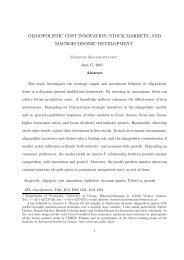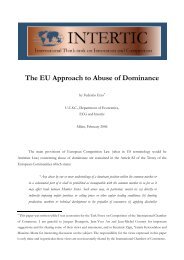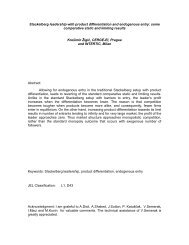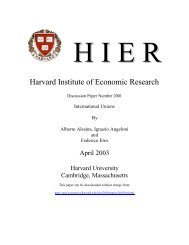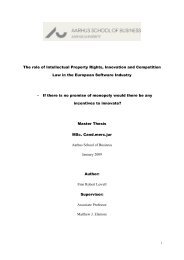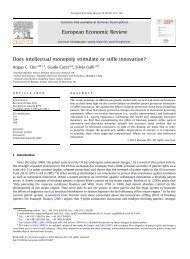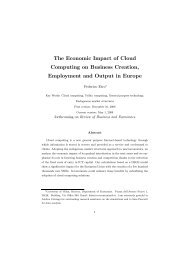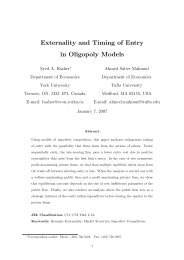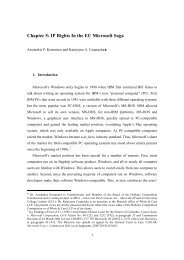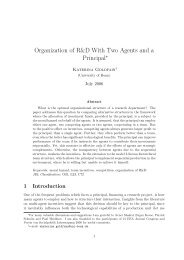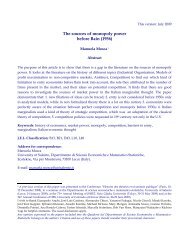PDF File - Institute of Social Science
PDF File - Institute of Social Science
PDF File - Institute of Social Science
You also want an ePaper? Increase the reach of your titles
YUMPU automatically turns print PDFs into web optimized ePapers that Google loves.
costs, the cost structure in the industry changes when the number <strong>of</strong> private firms changes. 5 We<br />
investigate the relationship between market competition and privatization policy by adopting a<br />
different approach: the relative pr<strong>of</strong>it (performance) approach.<br />
We now explain the relative pr<strong>of</strong>it approach we adopted. We consider a model where firms<br />
are concerned about relative pr<strong>of</strong>its rather than their own pr<strong>of</strong>its. Consider a symmetric n firm<br />
private oligopoly where all firms are private. Firm i’s pay<strong>of</strong>f is π i − α( ∑ j≠i π j), where π i is firm<br />
i’s pr<strong>of</strong>its. Firms independently choose their outputs. Then, the equilibrium outcome converges<br />
to the monopoly one when α converges to −1, it becomes the Cournot equilibrium when α =0,<br />
and it converges to the perfectly competitive one (Walrasian) when α is close to 1/(n-1). Thus,<br />
we can interpret α as a parameter indicating the severity <strong>of</strong> competition, a larger α indicates a<br />
more competitive market. 6<br />
The relative performance approach enables us to treat the degree <strong>of</strong><br />
market competition as a continuous variable. 7 We introduce this approach into a mixed oligopoly<br />
setting and discuss the relationship between α and the optimal degree <strong>of</strong> privatization. We find<br />
that optimal degree <strong>of</strong> privatization is decreasing in α, i.e., a tougher competition reduces the<br />
optimal degree <strong>of</strong> privatization. This result makes sharp contrast to the existing result that an<br />
increase in the number <strong>of</strong> firms increases the optimal degree <strong>of</strong> privatization.<br />
We discuss the rationale for employing objective functions based on relative performance in<br />
5 If the marginal cost is constant and all firms have identical cost functions, the number <strong>of</strong> firms does not<br />
affect the cost structure in the industry. Note that most works on mixed oligopoly including above three papers<br />
do not adopt this assumption. For the reason the mixed oligopoly literature does not adopt this assumption, see<br />
Matsumura (1998).<br />
6 For the related discussions, see Symeonidis (2000, 2008). Under the standard conditions in Cournot oligopoly,<br />
the ratio between pr<strong>of</strong>it margin (price minus marginal cost) and the price, known as Lerner index, is decreasing in<br />
α. This index is intensively used in the empirical literature as a measure <strong>of</strong> market competition in product markets.<br />
7 The conjectural variation approach is another approach that contains three models as special cases. However,<br />
the conjectural variation model assumes that firm 1’s output affects that <strong>of</strong> firm 2 and vice versa. Needless to say,<br />
this assumption is inconsistent in any static model. The relative performance approach does not have this defect.<br />
This is an advantage <strong>of</strong> this approach.<br />
3



